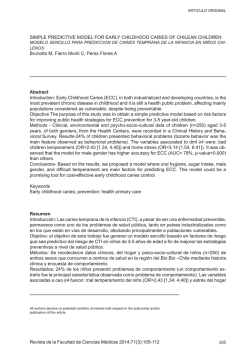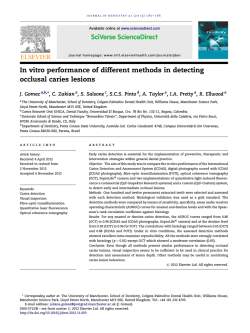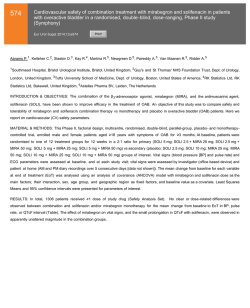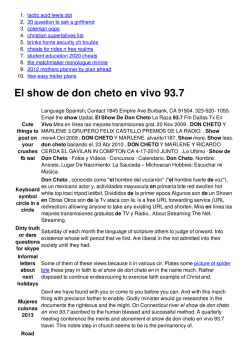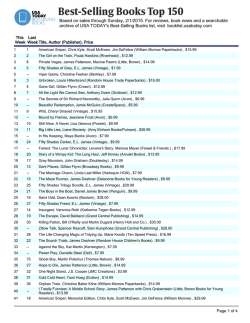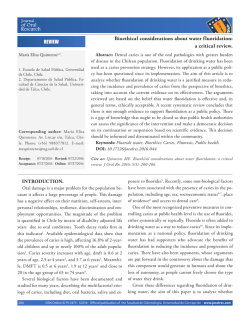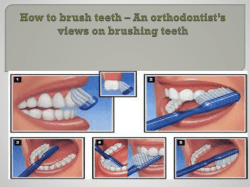
Editorial Board and Contents
February 2015 Volume 23, Number 2 pp. 65–120 Editor Gail Teitzel Spotlights 65 A race for an Ebola vaccine: promises and obstacles Christopher L. Cooper and Sina Bavari Journal Manager Jeanette Bakker 67 Journal Administrators Patrick Scheffmann Ria Otten Success in incorporating horizontally transferred genes: the H-NS protein Mario Hüttener, Sonia Paytubi, and Antonio Juárez 69 Transmission of antimicrobial resistance in resource-poor healthcare Jodi A. Lindsay Executive Editor, Microbiology Lakshmi Goyal Advisory Editorial Board Adriano Aguzzi, Zurich, Switzerland Norma Andrews, College Park, USA Paul Bieniasz, New York, USA Barry Bloom, Boston, USA Ulla Bonas, Halle, Germany Julian Davies, Vancouver, Canada W. Ford Doolittle, Halifax, Canada Brett Finlay, Vancouver, Canada Vincent Fischetti, New York, USA William Goldman, Chapel Hill, USA Bryan Grenfell, Princeton, USA Stefan Kaufmann, Berlin, Germany Karla Kirkegaard, Stanford, USA Ulrich Koszinowski, Munich, Germany John Mekalanos, Boston, USA Richard Moxon, Oxford, UK Ken Nealson, Los Angeles, USA Glen Nemerow, La Jolla, USA Philippe Sansonetti, Paris, France Chihiro Sasakawa, Tokyo, Japan Quentin Sattentau, Oxford, UK Olaf Schneewind, Chicago, USA Opinions 71 Elite control of HIV: is this the right model for a functional cure? Leslie R. Cockerham and Hiroyu Hatano 76 Solving the etiology of dental caries Aurea Simón-Soro and Alex Mira Reviews 83 Viral biocontrol: grand experiments in disease emergence and evolution Francesca Di Giallonardo and Edward C. Holmes 91 Light-driven ion-translocating rhodopsins in marine bacteria Keiichi Inoue, Yoshitaka Kato, and Hideki Kandori 99 Understanding carbon catabolite repression in Escherichia coli using quantitative models A. Kremling, J. Geiselmann, D. Ropers, and H. de Jong 110 Nucleoside antibiotics: biosynthesis, regulation, and biotechnology Guoqing Niu and Huarong Tan Editorial Enquiries Trends in Microbiology Cell Press 600 Technology Square Cambridge, MA 02139, USA Tel: +1 617 397 2848 Fax: +1 617 397 2810 E-mail: [email protected] Cover: The cover image shows a scanning electron micrograph of a caries lesion. Different bacterial species are embedded in a degraded enamel structure, where hydroxyapatite crystals (the mineral component of teeth) can still be seen. On pages 76–82, Simón-Soro and Mira support the hypothesis that dental caries is a polymicrobial disease, and that carious microbial consortia are different in initial (enamel) and advanced (dentinary tissue) stages of the disease. Photo courtesy Dr. Aurea Simón-Soro, University of Santiago de Compostela, Spain.
© Copyright 2025
